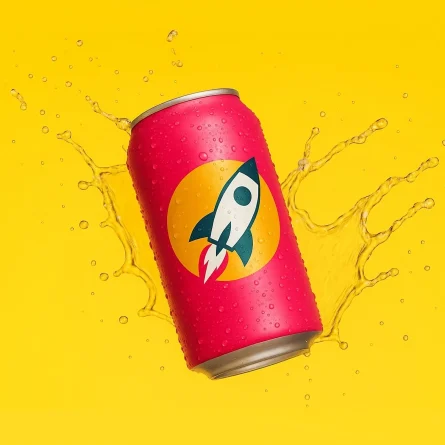Empathy: The Key to User Experiences That Resonate With Your Customers
Working at a strategy agency that helps clients communicate with their customers through their digital and branding presence, our mission is to propose design solutions that are effective, efficient, and innovative.
Our team of specialists works passionately to deliver design and technology of the highest standard. My role, however, as part of the UX Strategy team, comes before design and development. It’s all about the bigger picture and designing a path from idea to objectives.
As strategists, our objective is to uncover the needs of the end users and the design elements and touchpoints that will speak their language, reflect their aspirations and intent, and deliver better solutions than what currently exists in the market.
The key ingredient to doing this seems to be our industry’s current “it” word: empathy. A couple of months ago, Kristen from our team touched on this when she wrote about the takeaways from Digital Summit. Companies today are rethinking their products and offerings based on the needs of consumers, adopting an empathetic approach to design and product development.
What this “empathy first” methodology brings to the table is an experience-focused discovery process in which designers and strategists learn to think like their users to predict customers’ emotional connections, behaviors, decision making and market trends.
But Where Do We Even Begin?
At the end, of course!
Conventional wisdom dictates that the logical place to start any path is at the beginning. Surprisingly enough, digital and branding projects that rely on a positive user experience (UX) are most successful when they begin at the end, with the user’s needs and wants in mind.
And if you don’t believe us, you might be convinced by reflecting on some undeniable product flops like the Segway and Google Glass. They failed because good ideas don’t come from the people in charge of making; rather, they come from the people in charge of buying: the end user.
In UX, to better capture the needs of these customers, we run through empathy mapping exercises by creating what we call “personas.” In many romance languages, this term means “person,” but its true origin comes from the Latin word for “mask.” Like a mask, each persona we create is a fake representation of a real character. Characters are grouped into customer segments and different audiences that are symbolized throughout the whole strategy process and design development, by a persona.
Why don’t we just call them audiences? It’s the empathy factor that adds an emotional and humanizing component to your stakeholders, which leads to a more realistic representation of their wants and needs. A persona has a name, an age, and usually has a “job to get done” (a purpose or objective that your product could help them resolve). A persona also has feelings influenced by their background that will determine how they make decisions as they interact with your brand. Other elements we like to add to our personas are quotes, photos, an identifier (i.e., “the over-achieving millennial”) and sometimes even social media profiles. The more human and more visual, the better.
An important thing to add is that personas are not the result of pure fiction. They usually are shaped from grouping types of audiences after interviews and focus groups, because what makes them effective is the fact that they represent a real need.
Now Let Me Tell You a Story
After the creation of personas, we go to Phase 2: the journey map. You’ve probably heard the term “customer journey” a lot lately, but do you truly know why it’s important? Journeys tell stories and identify opportunities.
As humans, we love to communicate. Stories are the highlight of our existence, and they shape the way we behave. That’s why we watch movies, follow people on social media, and read bedtime stories to our children. But as bestselling author and Stanford University professor Chip Heath explains in his book Made to Stick, “The fable would not have survived for more than 2,500 years if it didn’t reflect some profound truth about human nature.”
A customer journey starts where the persona starts and marks each interaction with your brand in a timeline ranking it high or low in the “pleasant experience” y-axis, providing a visual curve of your user’s interaction with your product over time. This allows you to see opportunity gaps for improving specific touchpoints and provides a solid foundation for establishing new habits where the interaction is ranked high.
“Habit-forming products often start as nice-to-haves but once the habit is formed, they become must-haves,” behavioral design expert Nir Eyal explains in his book Hooked.
Through this simple technique of customer journey mapping, you can understand what your customer wants, where you can or must improve, and get on a path to consolidating brand loyalty through these must-haves.
What Comes After Discovery?
While I’ve covered the fundamental first steps to making sure you identify with the pain points and gain-creators of your audience, this is only the beginning of the relationship and a small portion of what our team does. Things get even more interesting as opportunities turn into ideas, problems transform into solutions, and relationships fully develop.
After the discovery process, the UX strategy team will communicate with the different teams to orchestrate the creation of a successful and relevant experience in collaboration with designers, developers, and brand strategists, making sure to always check with the end users who might lead reiteration of ideas and prototypes.
This process involves getting out of your office to organize focus groups, prototype experiences with low-fidelity versions of your product, and conduct interview users. You will not get answers sitting at your desk!
Sound UX strategy requires you to become aware of and compassionate to users’ troubles, to design around them, to listen for feedback, and to redesign accordingly in order to succeed.
What Does the Future Look Like?
It turns out the industry’s current “it” word is not just a trend — it’s a fundamental component that I believe we will see increasingly integrated as a “must have” in different businesses, industries, and processes. Hopefully, empathy mapping and user experience design is a habit all industries will eventually adopt. But for the time being, I encourage us all to start projects with the user in mind, guide decision making with insights that are irrefutably telling of what your user wants, and design experiences that resonate with your audience — because empathy is the new synonym for success.



